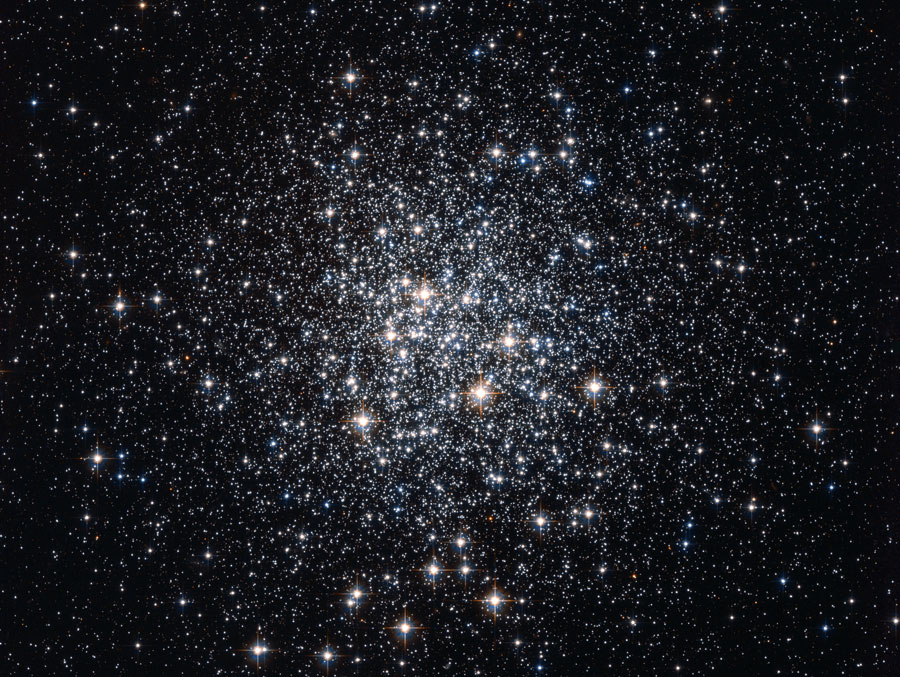
M72: A Globular Cluster of Stars
Credit: NASA, ESA, Hubble, HPOW
Posted on 05/12/2010 5:17:33 AM PDT by sig226

Explanation: Globular clusters once ruled the Milky Way. Back in the old days, back when our Galaxy first formed, perhaps thousands of globular clusters roamed our Galaxy. Today, there are less than 200 left. Many globular clusters were destroyed over the eons by repeated fateful encounters with each other or the Galactic center. Surviving relics are older than any Earth fossil, older than any other structures in our Galaxy, and limit the universe itself in raw age. There are few, if any, young globular clusters in our Milky Way Galaxy because conditions are not ripe for more to form. Pictured above by the Hubble Space Telescope are about 100,000 of M72's stars. M72, which spans about 50 light years and lies about 50,000 light years away, can be seen with a small telescope toward the constellation of the Water Bearer (Aquarius).

So these contain old stars. Are they more likely to contain old planets and old civilizations?
One TB is equal to 1000 gigabytes or 10^12 (1,000,000,000,000) bytes
Nothing like that KH-11/12 technology.
No because very old stars most likely have very few heavy elements, necessary for life. Heavy metal stars like our sun are created through repeated generations of short-lived stars. That whole galaxies can be like globular clusters, i.e. ellipticals, seems like a huge waste of space but I guess that’s how God wanted it.
You are right. Old stars lack heavy metals. I did know that, just forgot. Thanks.
Disclaimer: Opinions posted on Free Republic are those of the individual posters and do not necessarily represent the opinion of Free Republic or its management. All materials posted herein are protected by copyright law and the exemption for fair use of copyrighted works.